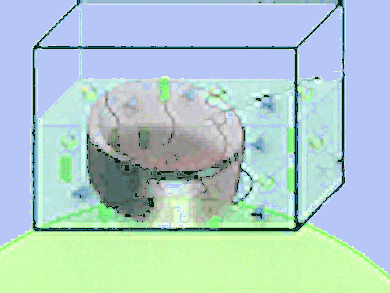Contaminated water from industries usually contains considerable amounts of organic hydrocarbons, such as benzene, toluene, ethylbenzene, and xylene (BTEX). Though the use of activated carbon is still considered to be one of the best methods, the disposal of adsorbed contaminants along with the adsorbent is a major concern.
Ritu Gupta and Giridhar U. Kulkarni, Jawaharlal Nehru Centre for Advanced Scientific Research, Bangalore, India, synthesized a low density, highly compressible, porous foam of poly(dimethylsiloxane) (PDMS) incorporated with Au nanoparticles of 10–50 nm by using a single-step process with water as a medium. The AuPDMS foam exhibits high swelling ability against benzene, toluene, ethylbenzene, and xylene (BTEX)—a property that has been exploited in the removal of oil spills from water. It is resistant to harsh chemical environments, is effective against odorous sulfur containing contaminants such as thioanisole, and works repeatedly and efficiently over many cycles. The regeneration is simple by heating it in air to 300°C for a short time. It can be molded into any shape during or after synthesis and fit into water channels or installed in water bodies for practical applications.
The AuPDMS composite is an attractive, sustainable material for water-based pollutants and odorous molecules. It is demonstrated to work effectively for removing malodorous chemicals present in air or deodorizing garlic extract with a promise as a food packaging material.
- Removal of Organic Compounds from Water by Using a Gold Nanoparticle–Poly(dimethylsiloxane) Nanocomposite Foam,
Ritu Gupta, Giridhar U. Kulkarni
ChemSusChem 2011.
DOI: 10.1002/cssc.201000410




